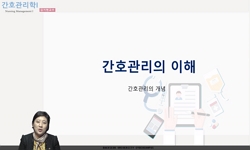본 연구는 류마티스관절염 여성의 자가간호역량, 일상생활동작(ADL), 통증, 불확실성, 자아존중감 정도를 파악하고, 자가간호역량에 영향을 미치는 요인들을 파악함으로써 류마티스관절염 ...
http://chineseinput.net/에서 pinyin(병음)방식으로 중국어를 변환할 수 있습니다.
변환된 중국어를 복사하여 사용하시면 됩니다.
- 中文 을 입력하시려면 zhongwen을 입력하시고 space를누르시면됩니다.
- 北京 을 입력하시려면 beijing을 입력하시고 space를 누르시면 됩니다.
https://www.riss.kr/link?id=T13845675
- 저자
-
발행사항
서울 : 경희대학교 일반대학원, 2015
-
학위논문사항
학위논문(석사) -- 경희대학교 일반대학원 대학원 , 간호학과 간호학 전공 , 2015. 8
-
발행연도
2015
-
작성언어
한국어
- 주제어
-
DDC
612 판사항(22)
-
발행국(도시)
서울
-
기타서명
Factors influencing on self-care ability of women with rheumatoid arthritis
-
형태사항
73 p. : 삽화 ; 26 cm
-
일반주기명
지도교수: 석소현
경희대학교 논문은 저작권에 의해 보호받습니다.
참고문헌: p. 49-58 - 소장기관
-
0
상세조회 -
0
다운로드
부가정보
국문 초록 (Abstract)
연구의 결과는 다음과 같다.
1. 대상자의 자가간호역량 평균평점은 3.59(±2.53)점으로 나타났으며, 일상생활동작(ADL)의 평균은 1.54(±0.35)점이었다. 통증의 평균은 4.38(±1.98)점으로 나타났으며 불확실성의 평균은 3.15(±1.63)점으로 나타났다. 자아존중감 평균은 3.55(±1.47)점으로 나타났다.
2. 일반적 특성과 질병관련 특성에 따른 자가간호역량의 차이검증 결과 연령이 40세 미만인 집단이 60세 이상인 집단보다, 학력이 고졸이상인 집단이 중졸이하인 집단보다 자가간호역량정도가 유의하게 높았다. 질병기간이 7년미만인 집단이 7년이상인 집단보다 자가간호역량정도가 유의하게 높았고, 현재 약물을 복용하지 않거나, 2개 이상 복용하는 집단이 1개의 약물을 복용하는 집단보다 자가간호역량정도는 유의하게 높게 나타났다.
3. 자가간호역량과 제 변수와의 상관관계 분석에서 자가간호역량은 일상생활동작(r=.246, p=.042), 자아존중감(r=.446, p<.001)과는 양의 상관관계를 나타내었고, 통증(r=-.357, p<.001), 불확실성(r=-.548, p<.001)과는 음의 상관관계를 나타냈다.
4. 자가간호역량에 가장 큰 영향을 미치는 요인은 불확실성(β=-.43, p<.001), 자아존중감(β=.26, p<.001)이었으며, 포함된 변수는 류마티스관절염 여성의 자가간호역량을 40.1%(p<.001) 설명하였다.
이상의 결과를 통해 류마티스관절염 여성의 자가간호역량에 영향을 미치는 요인으로는 일상생활동작(ADL), 통증, 불확실성, 자아존중감이 관련이 있는 것으로 확인되었다. 이 중 가장 큰 영향요인으로는 불확실성, 자아존중감으로 나타났다. 즉, 류마티스관절염 여성의 불확실성을 감소시키고, 자아존중감을 증가시키는 것은 궁극적으로 류마티스관절염 여성의 자가간호역량의 간호중재 프로그램 개발과 간호전략 개발에 기여할 수 있을 것이다.
본 연구는 류마티스관절염 여성의 자가간호역량, 일상생활동작(ADL), 통증, 불확실성, 자아존중감 정도를 파악하고, 자가간호역량에 영향을 미치는 요인들을 파악함으로써 류마티스관절염 여성을 위한 간호중재 프로그램과 간호전략 개발의 기초자료로 제시하기 위하여 시도되었다. 연구설계는 서술적 상관관계 조사연구로 자료수집기간은 서울특별시와 경기도에 소재한 종합병원 외래를 방문하는 132명을 대상으로 2015년 1월 15일부터 2015년 3월 10일까지 였다. 수집된 자료는 SPSS WIN 21.0 program을 이용하여 실수와 백분율, 평균, 표준편차, Scheffe, Pearson‘s correlation coefficient, t-test, ANOVA, multiple regression analysis 으로 분석하였다.
연구의 결과는 다음과 같다.
1. 대상자의 자가간호역량 평균평점은 3.59(±2.53)점으로 나타났으며, 일상생활동작(ADL)의 평균은 1.54(±0.35)점이었다. 통증의 평균은 4.38(±1.98)점으로 나타났으며 불확실성의 평균은 3.15(±1.63)점으로 나타났다. 자아존중감 평균은 3.55(±1.47)점으로 나타났다.
2. 일반적 특성과 질병관련 특성에 따른 자가간호역량의 차이검증 결과 연령이 40세 미만인 집단이 60세 이상인 집단보다, 학력이 고졸이상인 집단이 중졸이하인 집단보다 자가간호역량정도가 유의하게 높았다. 질병기간이 7년미만인 집단이 7년이상인 집단보다 자가간호역량정도가 유의하게 높았고, 현재 약물을 복용하지 않거나, 2개 이상 복용하는 집단이 1개의 약물을 복용하는 집단보다 자가간호역량정도는 유의하게 높게 나타났다.
3. 자가간호역량과 제 변수와의 상관관계 분석에서 자가간호역량은 일상생활동작(r=.246, p=.042), 자아존중감(r=.446, p<.001)과는 양의 상관관계를 나타내었고, 통증(r=-.357, p<.001), 불확실성(r=-.548, p<.001)과는 음의 상관관계를 나타냈다.
4. 자가간호역량에 가장 큰 영향을 미치는 요인은 불확실성(β=-.43, p<.001), 자아존중감(β=.26, p<.001)이었으며, 포함된 변수는 류마티스관절염 여성의 자가간호역량을 40.1%(p<.001) 설명하였다.
이상의 결과를 통해 류마티스관절염 여성의 자가간호역량에 영향을 미치는 요인으로는 일상생활동작(ADL), 통증, 불확실성, 자아존중감이 관련이 있는 것으로 확인되었다. 이 중 가장 큰 영향요인으로는 불확실성, 자아존중감으로 나타났다. 즉, 류마티스관절염 여성의 불확실성을 감소시키고, 자아존중감을 증가시키는 것은 궁극적으로 류마티스관절염 여성의 자가간호역량의 간호중재 프로그램 개발과 간호전략 개발에 기여할 수 있을 것이다.
다국어 초록 (Multilingual Abstract)
The research results are as follows.
1. The average score of the research subjects’ self-care ability was 3.59(±2.53), and the average score of their activity of daily living (ADL) was 1.54(±0.35). Next, the average score of pain was 4.38(±1.98), and the average score of uncertainty was 3.15(±1.63). Finally, the average score of self-esteem was 3.55(±1.47).
2. The result of difference verification showed that the group of women below the age of 40 had a significantly higher self-care ability than the group above the age of 60, and the group of women with high school diploma or above had a significantly higher self-care ability than the group with middle school diploma or below. Next, the group with less than 7 years of disease period had a significantly higher self-care ability than the group with 7 or more years of disease period. Finally, the group that does not take medicine or takes two or more medicines had a higher level of self-care ability than the group that takes 1 medicine.
3. In correlation analysis between self-care ability and variables, self-care ability had a positive correlation with activity of daily living (r=.246, p=.042) and self-esteem (r=.446, p<.001), while it had a negative correlation with pain (r=-.357, p<.001) and uncertainty(r=-.548, p<.001).
4. The factors that had the biggest influence on self-care ability were uncertainty (β=-.43, p<.001) and self-esteem (β=.26, p<.001), and the included variables explained the self-care ability of women with rheumatoid arthritis in 40.1% (p<.001).
Through this result, it was confirmed that activity of daily living (ADL), pain, uncertainty, and self-esteem were the factors influencing the self-care ability of women with rheumatoid arthritis. Among them, the biggest influencing factors were uncertainty and self-esteem. Thus, reducing uncertainty and increasing self-esteem of women with rheumatoid arthritis would ultimately contribute to the development of nursing intervention program and nursing strategy for the self-care ability of women with rheumatoid arthritis.
The purpose of this research is to understand the level of self-care ability, activity of daily living(ADL), pain, uncertainty, and self-esteem of women with rheumatoid arthritis, and figure out the factors that influence self-care ability, in order t...
The purpose of this research is to understand the level of self-care ability, activity of daily living(ADL), pain, uncertainty, and self-esteem of women with rheumatoid arthritis, and figure out the factors that influence self-care ability, in order to be proposed as preliminary data for developing nursing intervention program and nursing strategy for women with rheumatoid arthritis. The research was designed as a descriptive correlation research, and the data was collected between January 15, 2015 and March 10th, 2015 from 132 patients who visited the out patient departments of general hospitals in Seoul and Kyunggi-do. The collected data was analyzed through real numbers, percentage, average, standard deviation, Pearson‘s correlation coefficient, t-test, ANOVA, and multiple regression analysis, using SPSSWIN21.0 program.
The research results are as follows.
1. The average score of the research subjects’ self-care ability was 3.59(±2.53), and the average score of their activity of daily living (ADL) was 1.54(±0.35). Next, the average score of pain was 4.38(±1.98), and the average score of uncertainty was 3.15(±1.63). Finally, the average score of self-esteem was 3.55(±1.47).
2. The result of difference verification showed that the group of women below the age of 40 had a significantly higher self-care ability than the group above the age of 60, and the group of women with high school diploma or above had a significantly higher self-care ability than the group with middle school diploma or below. Next, the group with less than 7 years of disease period had a significantly higher self-care ability than the group with 7 or more years of disease period. Finally, the group that does not take medicine or takes two or more medicines had a higher level of self-care ability than the group that takes 1 medicine.
3. In correlation analysis between self-care ability and variables, self-care ability had a positive correlation with activity of daily living (r=.246, p=.042) and self-esteem (r=.446, p<.001), while it had a negative correlation with pain (r=-.357, p<.001) and uncertainty(r=-.548, p<.001).
4. The factors that had the biggest influence on self-care ability were uncertainty (β=-.43, p<.001) and self-esteem (β=.26, p<.001), and the included variables explained the self-care ability of women with rheumatoid arthritis in 40.1% (p<.001).
Through this result, it was confirmed that activity of daily living (ADL), pain, uncertainty, and self-esteem were the factors influencing the self-care ability of women with rheumatoid arthritis. Among them, the biggest influencing factors were uncertainty and self-esteem. Thus, reducing uncertainty and increasing self-esteem of women with rheumatoid arthritis would ultimately contribute to the development of nursing intervention program and nursing strategy for the self-care ability of women with rheumatoid arthritis.
목차 (Table of Contents)
- I. 서론 1
- 1. 연구의 필요성 1
- 2. 연구의 목적 3
- 3. 용어 정의 4
- Ⅱ. 문헌고찰 6
- I. 서론 1
- 1. 연구의 필요성 1
- 2. 연구의 목적 3
- 3. 용어 정의 4
- Ⅱ. 문헌고찰 6
- 1. 류마티스관절염 여성 6
- 2. 류마티스관절염 여성의 자가간호역량 8
- 3. 자가간호역량에 미치는 영향요인 11
- 4. 류마티스관절염 여성의 자가간호역량에 관한 연구의 개념적 모형 18
- Ⅲ. 연구방법 19
- 1. 연구설계 19
- 2. 연구대상 19
- 3. 연구도구 20
- 4. 자료수집 기간 및 방법 23
- 5. 윤리적 고려 23
- 6. 자료분석방법 24
- Ⅳ. 연구결과 25
- 1. 대상자의 일반적 특성과 질병관련 특성 25
- 2. 류마티스관절염 여성의 자가간호역량, 일상생활동작(ADL), 통증, 불확실성, 자아존중감 정도 29
- 3. 류마티스관절염 여성의 일반적 특성과 질병관련 특성에 따른 자가간호역량 차이검증 30
- 4. 류마티스관절염 여성의 자가간호역량과 제 변수와의 상관관계 34
- 5. 류마티스관절염 여성의 자가간호역량에 미치는 영향요인 37
- Ⅴ. 논의 40
- Ⅵ. 결론 및 제언 46
- 참고문헌 49
- 부록 59
- ABSTRACT 71











